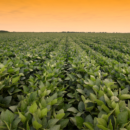FNC News
Landowner News - A Dynamic Ag Outlook
Agriculture today is in a dynamic state characterized by constant change. From geopolitical events in Ukraine and other parts of the world, to ever-increasing competition from South America, to being back in a normalized interest rate environment and grain markets that have taken a cyclical turn downward - it is challenging.
The year 2024 marked the 100th anniversary of the United States Department of Agriculture’s (USDA) Outlook Forum. Several takeaways I found of interest at the forum include:
- Farmers are dynamic in their flexibility and ability to change their crop selection during planting time. They are becoming ever more responsive to weather and market conditions and adjusting accordingly.
- The United States’ share of global corn, soybeans, and wheat exports have been in decline since the early 1990s due to the tremendous growth in South America. This, combined with the recent slowdown in Chinese demand, has created a challenge in the grain markets.
- World cotton consumption hasn’t grown since 2004 and the U.S. is still the world’s largest cotton exporter but is getting more and more competition from other fibers.
- Agriculture needs to bolster the ability to have multiple income streams.
- We are back in a normalized interest rate environment not seen in almost 15 years; this has caused interest expenses to increase by 70% in agriculture.
One item everyone mentions is the weather. Weather truly has a global impact on agriculture. We are paying more attention to the weather during the growing season in South America. We are paying more attention to weather patterns, La Nina, El Nino, drought conditions, etc. We can’t control the weather, but we can make sure we are doing everything we can to minimize the risk, such as enrolling in crop insurance and making sure our coverage levels are adequate.
We also must use caution in the next several years regarding our bottom line, such as finding the best prices on inputs, looking for programs that offer the best incentives, different pay periods to minimize accruing interest, and improvements to land that will generate a return on investment faster. We will need to hone our marketing strategy as well, like determining a grain marketing strategy based on the markets as well as looking at past figures when we were in the same period.
We in agriculture must continue to be innovative in how we manage and look to new possibilities to bring about efficiencies, reduce costs, and develop new income possibilities.
More News




